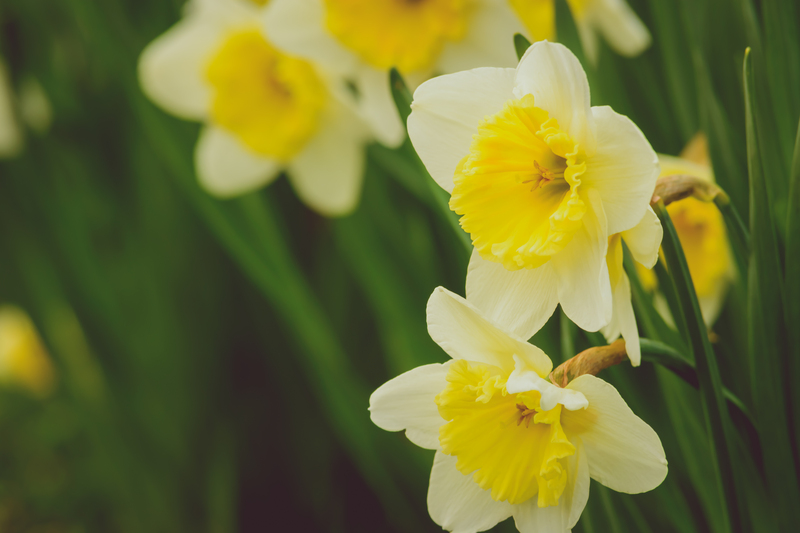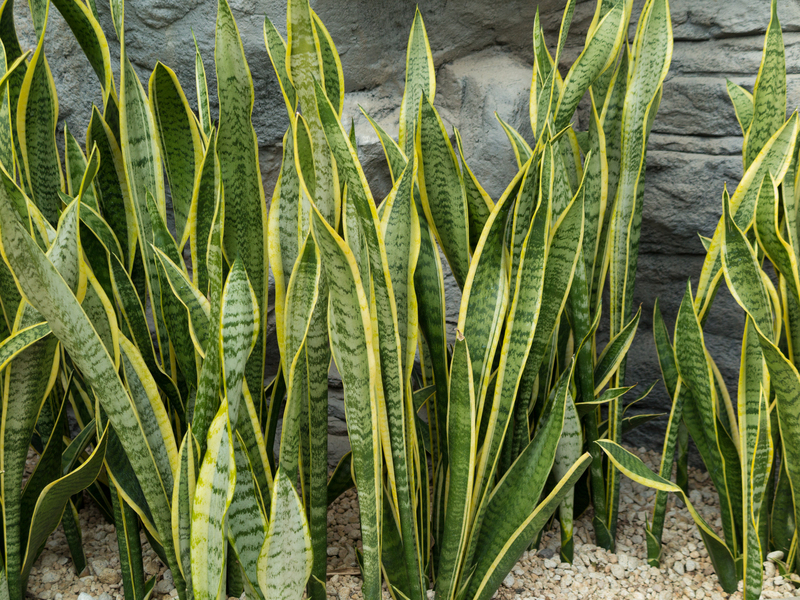How container gardening can simplify your gardening
Posted on 19/06/2025
How Container Gardening Can Simplify Your Gardening
Container gardening is transforming the way modern gardeners approach home horticulture. Whether you're short on space, dealing with poor soil, or simply looking for a more flexible and accessible way to cultivate your favorite plants, container gardening simplifies gardening processes and makes green spaces achievable for everyone. In this comprehensive guide, we'll explore how container gardens can make gardening easier, the advantages of growing in pots, and practical tips to ensure your container plants thrive.

What is Container Gardening?
Simply put, container gardening involves growing plants in pots, tubs, hanging baskets, or other containers rather than directly in the ground. It's an approach suited for apartment dwellers, homeowners, urban gardeners, and even beginners who want to dip their toes into the world of gardening without the commitment of a full backyard plot.
Different Forms of Container Gardening
- Outdoor patio container gardens
- Indoor container planters for houseplants
- Edible container gardens featuring herbs, vegetables, and fruits
- Vertical and hanging gardens
- Window boxes and balcony planters
With container gardening techniques, anyone can bring nature closer to their living spaces--regardless of constraints.
How Container Gardening Makes Gardening Easier
1. Mobility and Flexibility
One of the best ways container gardening simplifies your gardening is by offering unmatched flexibility. Unlike traditional plots, potted plants can be moved as needed to:
- Catch sunlight at different times of year
- Avoid harsh weather conditions
- Change your garden's layout instantly
- Bring plants indoors during cold snaps
This mobility allows even novice gardeners to give their plants the ideal environment for growth, minimizing risks and failures.
2. Better Control Over Growing Conditions
Growing plants in containers means you're in charge of the soil, water, and nutrients. Poor soil in your yard or challenging ground conditions need not hold you back. You can:
- Choose soil mixes that match specific plant requirements
- Control moisture more effectively
- Prevent soil-borne diseases and pests from taking over
- Tailor fertilization and amendments
Container gardening for beginners is especially appealing because it reduces many "unknowns" associated with ground gardening.
3. Simplified Maintenance
When you grow in pots, you'll deal with:
- Less weeding
- Reduced pest problems
- Minimal soil compaction
- Easy watering and drainage monitoring
This dramatically cuts down on time and effort. For busy professionals, the elderly, or anyone with mobility challenges, container gardening can turn a once-daunting hobby into a simple and enjoyable routine.
4. Accessibility for All Gardeners
Container gardens are ideal for people with limited mobility or physical strength. Planters and pots can be placed on tables, ledges, benches, or stands, reducing the need for kneeling and bending. This makes gardening more inclusive and enjoyable for all ages and abilities.
5. Instant Color and Versatility
With containers, you can swap out plants as the seasons change or as your tastes evolve. Want a burst of summer color or fresh herbs all year long? Simply change, rearrange, or replant your pots to suit each occasion or vision, creating dynamic spaces with minimal effort.
Key Benefits of Container Gardening
Why Container Gardening is a Game-Changer for Modern Gardeners
Let's dig deeper into how gardening in containers delivers specific advantages that simplify gardening and enhance success:
- Space Saving: Container gardening is perfect for balconies, patios, rooftops, and even windowsills. Urban dwellers and renters can cultivate lush oases in the smallest spaces.
- Soil Management: Eliminate concerns about poor native soil by choosing the best potting mixes tailored to your plants' needs.
- Pest and Disease Resistance: Containers isolate plants from many ground-based pests and diseases, reducing the need for chemicals and treatments.
- Seasonal Flexibility: Move tender plants indoors in winter or reposition them for best sun exposure as sunlight shifts throughout the year.
- Decorative Appeal: Use attractive pots, unique containers, or coordinated color schemes to enhance your home's aesthetics. Container gardens can be as beautiful as they are functional.
- Water Efficiency: Since you're watering a defined space, there's less wastage and better moisture management.
- Accessibility: Create elevated gardens to make planting and harvesting easier for everyone.
How to Get Started with Container Gardening
Step-by-Step Guide for Beginner Container Gardeners
-
Choose the Right Containers:
- Plastic, ceramic, terra cotta, metal, and wood are all popular choices. Consider weight, durability, and drainage.
- Ensure containers have proper drainage holes to prevent root rot.
-
Select the Appropriate Potting Mix:
- Use specially formulated potting soil for containers (not regular garden dirt).
- For specific plants, such as succulents or orchids, use the recommended mix.
-
Pick Your Plants:
- Flowers, vegetables, herbs, small shrubs, and even dwarf trees can be grown in pots.
- Choose plants that thrive in your climate and intended location (full sun, partial shade, etc.).
-
Position Your Containers:
- Observe the light in your chosen location and group plants with similar needs together.
- Remember: Portability lets you experiment until you find the best spot!
-
Water and Fertilize Regularly:
- Containers dry out faster, so monitor moisture levels frequently.
- Use slow-release or liquid fertilizers tailored for containers.
-
Maintain and Rotate:
- Check for pests, deadhead flowers, and repot as plants outgrow their containers.
- Refresh soil or top-dress with compost every planting season to boost plant health.
Best Plants for Container Gardening
Top Choices for Container Growing
- Herbs: Basil, rosemary, thyme, mint, and chives are compact and thrive in pots.
- Vegetables: Tomatoes, peppers, lettuce, radishes, kale, and even dwarf carrots.
- Flowers: Marigolds, petunias, geraniums, pansies, impatiens, and begonias add color and charm to any space.
- Succulents and Cacti: Perfect for beginners due to their low maintenance requirements.
- Small Fruits: Strawberries, blueberries (in acidic soil), and dwarf citrus trees.
- Foliage Plants: Ferns, hostas, coleus, and ornamental grasses for lush greenery.
Don't be afraid to mix and match! Many edible and ornamental plants make beautiful container combinations, maximizing both function and form.
Tips to Make Container Gardening Even Easier
Your Container Gardening Success Checklist
- Self-Watering Pots: Invest in containers with built-in reservoirs to minimize watering duties.
- Mulch: Add a layer of organic mulch to help retain soil moisture and reduce weeds.
- Group Containers: Arranging pots in clusters can create a microclimate, lowering evaporation and deterring pests.
- Rotate and Replant: Take advantage of portability to refresh your display or give tired soil a break.
- Monitor Drainage: Ensure water is not pooling at the bottom of containers. Elevate pots with risers or bricks if needed.
- Use Lightweight Potting Mix: Especially for large pots that might be moved frequently--light mixes reduce weight and stress on both you and the plants.
- Fertilize Appropriately: Container plants use up nutrients faster, so supplement regularly with liquid feed or slow-release fertilizers.
Common Container Gardening Challenges & Solutions
Potential Hurdles and How to Overcome Them
- Overwatering or Underwatering: Always check soil moisture before watering. Use finger test or moisture meters for precise care.
- Root Crowding: Repot plants that become root-bound to provide fresh space and nutrients.
- Nutrient Depletion: Top-dress with compost or use fertilizer as instructed.
- Weather Damage: Move containers to shelter during storms, frost, or extreme heat.
- Pests: Isolate affected pots and use organic remedies to combat issues quickly.
With these practical strategies, you'll find that container gardening significantly simplifies plant care and boosts your gardening confidence.
Creative Ideas to Enjoy Container Gardening
Maximize Style with Your Container Gardens
- Create a mini herb kitchen on your windowsill for fresh flavor at arm's reach
- Design a colorful flower tower on your front porch
- Grow strawberries or cherry tomatoes in hanging baskets
- Arrange a succulent centerpiece for your patio table
- Install a vertical garden using wall-mounted containers
- Use recycled containers (tin cans, old boots, wooden crates) for eco-friendly statement pieces

Environmental Advantages of Container Gardening
Besides simplifying gardening, container gardens can be more sustainable and resource-efficient. Here's how:
- Water Conservation: Targeted watering means less waste compared to sprinkler systems.
- Reduced Chemical Use: Isolated soil and plants mean fewer outbreaks of pests or diseases, lowering the need for sprays.
- Urban Greening: Turn rooftops, balconies, and paved spaces into productive green zones, cooling neighborhoods and improving local air quality.
Conclusion: Why Container Gardening Is the Easiest Way to Garden
Container gardening simplifies gardening by removing barriers like poor soil, lack of space, and accessibility issues. By offering mobility, control, and creative flexibility, it fits seamlessly into any lifestyle and location. Whether you're growing vegetables, herbs, or flowers, pots and planters can help you enjoy a thriving, beautiful garden with less work and greater results.
Ready to simplify your gardening? Try container gardening today and discover how easy, rewarding, and fun growing in pots can be!



